Better global water information through the Global Hydrological Status and Outlook System (HydroSOS) & Reporting
World Meteorological Organization (WMO)
(
Intergovernmental organization
)
#SDGAction51142
Description
We cannot manage something well that we don’t measure. The capacity to monitor and manage water resources is fragmented and inadequate. WMO and partners endeavor to improve global water information through a Hydrological Status and Outlook System (HydroSOS) and an annual State of Global Water Resources Report.
The initiative will (1) enhance the capacities of countries to produce hydrological status assessments and outlooks at seasonal to sub-seasonal scale; (2) integrate such products for policy and decision-making at the national, regional, and global level; and (3) release a yearly global report presenting an overall status of the water resources. Member States, Decision-makers and Stakeholders will be able to respond to questions, such as: “How much water is available in my basin or region at the moment?”; "Is the current situation normal or significantly above/below normal conditions?"; and "How might the local and regional flood/drought situation change in the coming weeks to months?”.
The initiative focuses on implementing HydroSOS at various scales (regional, national and global) by assessing existing capacities, further developing those capacities and technical applications, and establishing WMO HydroSOS Centers embedded within the WMO Integrated Processing and Prediction System (WIPPS). HydroSOS aspires to build a sustainable and robust global framework for hydrological status and outlook information which is centered on locally produced analysis, supplemented by products from global hydrological models and data centers. HydroSOS portals will ensure the products are open and accessible for WMO Members and other stakeholders.
The first global report was launched in 2022 which gave an overall picture of the water resources, changes in hydrological storages (groundwater, snow and ice) and major hydrological extreme events and associated losses. The report provided hydrological information to enhance, guide and support water-related decision-making by planners, managers, and policymakers at all levels of government. Once HydroSOS is operational, the Annual State of Water Resources report will present information derived from HydroSOS and serve as a summary of information to guide policy development, climate change mitigation, and adaptation action.
The governance is overseen by the two technical commissions of WMO and is coordinated by the Hydrological Coordination Panel. The work streams are divided into Technical Development, Implementation, and Coordination, constituted by teams of experts from partners and WMO staff. HydroSOS implementation is also supported by the other WMO activities like the HydroHub (focusing on innovation to increase capacities of Member states), and WHOS (WMO Hydrological Observing System which works as a broker for effective data/information transfer)
The HydroSOS and the State of Global Water Resources report are elements included in the WMO Plan of Action for Water based on a decadal Vision and Strategy for Hydrology with eight Ambitions that support the operational hydrological community. Specifically, “By 2030 a cooperative global community is successfully addressing the growing challenges related to hydrological extremes, water availability and quality, and food security, by advancing operational hydrology through enhanced science, infrastructure, capacity-building and related services, in the context of sustainable development and enhanced resilience.”
WMO’s objective is to help us, and future generations to understand better how water availability and the frequency of floods and droughts respond to the changing climate and anthropogenic activities and the resulting impact on the water-energy-food-ecosystem nexus (SDG 6, 2, 7, 11, 13, and 15).
HydroSOS is currently being implemented at global, regional, and national/local scales. Over three years, it is expected that HydroSOS will be functional and share the hydrological status of at least 50 countries and the hydrological outlooks of at least 20 countries. Complementing HydroSOS, the annual State of Water Resources report is fed by the information from countries participating in HydroSOS, helping to reduce the gaps in information at the global scale by taking action at the national/regional scales.
Several socioeconomic sectors, if not all, depend on water. Making hydrological information available is the first step to empower stakeholders to make informed decisions. HydroSOS will inform planning, decision and policy-making, addressing current gaps in the availability of water information. Understanding water resource availability allows better planning and support for safe drinking water and sanitation (SDG 6) and informs impacts on people (SDG 1, 2, 3, 4 and 5), industries (SDG 9), and the environment (SDG 14 and 15). Providing baselines and projections on changes to water resources, also informs mitigation and adaptation to climate change and its impacts on society (SDG 13), as well as potential security issues (SDG 16). HydroSOS empowers national and international water management and catalyzes international cooperation through trusted water data, assessments, and outlooks.
Improved global water information through HydroSOS will accelerate the implementation of the SDGs by fostering international and regional cooperation among countries and ministries (SDG 17). Shared information products will support decision-makers and river basin-wide collaboration. National Meteorological and Hydrological Services (NMHS) will support ministries of environment, water, climate change, transport, etc., by providing timely information on the state of their water resources. This will further provide an integrated regional/global overview of the resource to assist the aid & development sector, NGOs and UN entities in their anticipatory action and response to water-related hazards (SDG 11.5). The HydroSOS framework is an enabler for establishing Early Warning for all (EW4ALL) by strengthening the monitoring and forecasting capacities for floods and droughts of the Members through various implementation levels.
Finally, better water data and information is paramount in guiding intergovernmental discussions regarding shared water resources. This initiative underscores the integral role of Member States in achieving this and strongly encourages Members to strengthen their monitoring network for timely data collection of the various components of the water cycle – groundwater, soil moisture, streamflow and snow and ice, etc. – to share the data obtained under the WMO Unified Data Policy encouraging open data and knowledge.
The Global Hydrological Status and Outlook System (HydroSOS) is being implemented through collaboration with different partners, including National Meteorological and Hydrological Services (NMHS) and affiliated water departments, transboundary basin organizations, research organizations, and with consultations with stakeholders from various sectors, including agriculture, energy, disaster risk reduction (DRR), dam operators, etc.
A few examples of partners who are contributing to the implementation and technical development of standards of HydroSOS and outputs like the State of Global Water Resources report include:
• NMHSs: UK Centre for Ecology & Hydrology of the United Kingdom (UKCEH), National Water Institute of Argentina (INA), National Meteorological and Hydrological Service of Peru (SENAMHI), National Institute of Water and Atmospheric Research of New Zealand (NIWA), Ghana Meteorological Agency (GMet) Nigerian Meteorological Agency (NiMet) Regional Climate Centres and transboundary basin partners in Lake Victoria Basin: Nile Basin Initiative (NBI), Lake Victoria Basin Commission (LVBC), IGAD Climate Prediction and Applications Centre (ICPAC).
• Climate and hydrological modelling and prediction partners, and research centers: NASA, ECMWF, NCAR, Swedish Meteorological and Hydrological Institute (SMHI), UNEP-DHI, University of Saskatchewan, Brigham Young University (BYU), JRC, UFZ, Goethe, University Frankfurt, Utrecht University, Deltares, Japan Aerospace Exploration Agency, University of Tokyo, Nanjing University of Science and Technology, GFZ Potsdam
• Multilateral Development Banks: World Bank Group, Inter-American Development Bank
• UN entities: UNEP, FAO, UNESCO, UNDRR, IAEA
• Global data centers: Global Runoff Data Centre (GRDC), International Groundwater Centre (IGRAC), International Soil Moisture Network (ISMN)
State of Global Water Resources report 2021: https://public.wmo.int/en/our-mandate/water/state-of-global-water-resou…
HydroSOS Flyer1: https://tinyurl.com/e33c2mef
HydroSOS Flyer2: https://tinyurl.com/2mmrvptu
HydroSOS Flyer3: https://tinyurl.com/4nnev4eh
Video1 : https://www.youtube.com/watch?v=CskmvyQ9VVE
Video2: https://www.youtube.com/watch?v=V9saq83FZ-A
Video3: https://www.youtube.com/watch?v=eUTZhucc774&t=354s
SDGS & Targets
Goal 6
Ensure availability and sustainable management of water and sanitation for all
6.1
By 2030, achieve universal and equitable access to safe and affordable drinking water for all
6.1.1
Proportion of population using safely managed drinking water services
6.2
By 2030, achieve access to adequate and equitable sanitation and hygiene for all and end open defecation, paying special attention to the needs of women and girls and those in vulnerable situations
6.2.1
Proportion of population using (a) safely managed sanitation services and (b) a hand-washing facility with soap and water
6.3
By 2030, improve water quality by reducing pollution, eliminating dumping and minimizing release of hazardous chemicals and materials, halving the proportion of untreated wastewater and substantially increasing recycling and safe reuse globally
6.3.1
Proportion of domestic and industrial wastewater flows safely treated
6.3.2
Proportion of bodies of water with good ambient water quality
6.4
6.4.1
Change in water-use efficiency over time
6.4.2
Level of water stress: freshwater withdrawal as a proportion of available freshwater resources
6.5
By 2030, implement integrated water resources management at all levels, including through transboundary cooperation as appropriate
6.5.1
Degree of integrated water resources management
6.5.2
Proportion of transboundary basin area with an operational arrangement for water cooperation
6.6
6.6.1
Change in the extent of water-related ecosystems over time
6.a
6.a.1
Amount of water- and sanitation-related official development assistance that is part of a government-coordinated spending plan
6.b
Support and strengthen the participation of local communities in improving water and sanitation management
6.b.1
Proportion of local administrative units with established and operational policies and procedures for participation of local communities in water and sanitation management
Goal 11
Make cities and human settlements inclusive, safe, resilient and sustainable
11.1
By 2030, ensure access for all to adequate, safe and affordable housing and basic services and upgrade slums
11.1.1
Proportion of urban population living in slums, informal settlements or inadequate housing
11.2
11.2.1
Proportion of population that has convenient access to public transport, by sex, age and persons with disabilities
11.3
11.3.1
Ratio of land consumption rate to population growth rate
11.3.2
Proportion of cities with a direct participation structure of civil society in urban planning and management that operate regularly and democratically
11.4
Strengthen efforts to protect and safeguard the world’s cultural and natural heritage
11.4.1
Total per capita expenditure on the preservation, protection and conservation of all cultural and natural heritage, by source of funding (public, private), type of heritage (cultural, natural) and level of government (national, regional, and local/municipal)
11.5
By 2030, significantly reduce the number of deaths and the number of people affected and substantially decrease the direct economic losses relative to global gross domestic product caused by disasters, including water-related disasters, with a focus on protecting the poor and people in vulnerable situations
11.5.1
Number of deaths, missing persons and directly affected persons attributed to disasters per 100,000 population
11.5.2
Direct economic loss attributed to disasters in relation to global domestic product (GDP)
11.5.3
(a) Damage to critical infrastructure and (b) number of disruptions to basic services, attributed to disasters
11.6
By 2030, reduce the adverse per capita environmental impact of cities, including by paying special attention to air quality and municipal and other waste management
11.6.1
Proportion of municipal solid waste collected and managed in controlled facilities out of total municipal waste generated, by cities
11.6.2
Annual mean levels of fine particulate matter (e.g. PM2.5 and PM10) in cities (population weighted)
11.7
11.7.1
Average share of the built-up area of cities that is open space for public use for all, by sex, age and persons with disabilities
11.7.2
Proportion of persons victim of non-sexual or sexual harassment, by sex, age, disability status and place of occurrence, in the previous 12 months
11.a
Support positive economic, social and environmental links between urban, peri-urban and rural areas by strengthening national and regional development planning
11.a.1
Number of countries that have national urban policies or regional development plans that (a) respond to population dynamics; (b) ensure balanced territorial development; and (c) increase local fiscal space
11.b
By 2020, substantially increase the number of cities and human settlements adopting and implementing integrated policies and plans towards inclusion, resource efficiency, mitigation and adaptation to climate change, resilience to disasters, and develop and implement, in line with the Sendai Framework for Disaster Risk Reduction 2015-2030, holistic disaster risk management at all levels
11.b.1
Number of countries that adopt and implement national disaster risk reduction strategies in line with the Sendai Framework for Disaster Risk Reduction 2015–2030
11.b.2
Proportion of local governments that adopt and implement local disaster risk reduction strategies in line with national disaster risk reduction strategies
11.c
Support least developed countries, including through financial and technical assistance, in building sustainable and resilient buildings utilizing local materials
Goal 13
Take urgent action to combat climate change and its impacts
13.1
Strengthen resilience and adaptive capacity to climate-related hazards and natural disasters in all countries
13.1.1
Number of deaths, missing persons and directly affected persons attributed to disasters per 100,000 population
13.1.2
Number of countries that adopt and implement national disaster risk reduction strategies in line with the Sendai Framework for Disaster Risk Reduction 2015–2030
13.1.3
Proportion of local governments that adopt and implement local disaster risk reduction strategies in line with national disaster risk reduction strategies
13.2
Integrate climate change measures into national policies, strategies and planning
13.2.1
Number of countries with nationally determined contributions, long-term strategies, national adaptation plans and adaptation communications, as reported to the secretariat of the United Nations Framework Convention on Climate Change
13.2.2
Total greenhouse gas emissions per year
13.3
Improve education, awareness-raising and human and institutional capacity on climate change mitigation, adaptation, impact reduction and early warning
13.3.1
Extent to which (i) global citizenship education and (ii) education for sustainable development are mainstreamed in (a) national education policies; (b) curricula; (c) teacher education; and (d) student assessment
13.a
Implement the commitment undertaken by developed-country parties to the United Nations Framework Convention on Climate Change to a goal of mobilizing jointly $100 billion annually by 2020 from all sources to address the needs of developing countries in the context of meaningful mitigation actions and transparency on implementation and fully operationalize the Green Climate Fund through its capitalization as soon as possible
13.a.1
Amounts provided and mobilized in United States dollars per year in relation to the continued existing collective mobilization goal of the $100 billion commitment through to 2025
13.b
Promote mechanisms for raising capacity for effective climate change-related planning and management in least developed countries and small island developing States, including focusing on women, youth and local and marginalized communities
13.b.1
Number of least developed countries and small island developing States with nationally determined contributions, long-term strategies, national adaptation plans and adaptation communications, as reported to the secretariat of the United Nations Framework Convention on Climate Change
Goal 16
Promote peaceful and inclusive societies for sustainable development, provide access to justice for all and build effective, accountable and inclusive institutions at all levels
16.1
Significantly reduce all forms of violence and related death rates everywhere
16.1.1
16.1.2
16.1.3
Proportion of population subjected to (a) physical violence, (b) psychological violence and/or (c) sexual violence in the previous 12 months
16.1.4
Proportion of population that feel safe walking alone around the area they live after dark
16.2
End abuse, exploitation, trafficking and all forms of violence against and torture of children
16.2.1
Proportion of children aged 1–17 years who experienced any physical punishment and/or psychological aggression by caregivers in the past month
16.2.2
16.2.3
Proportion of young women and men aged 18–29 years who experienced sexual violence by age 18
16.3
Promote the rule of law at the national and international levels and ensure equal access to justice for all
16.3.1
Proportion of victims of (a) physical, (b) psychological and/or (c) sexual violence in the previous 12 months who reported their victimization to competent authorities or other officially recognized conflict resolution mechanisms
16.3.2
16.3.3
Proportion of the population who have experienced a dispute in the past two years and who accessed a formal or informal dispute resolution mechanism, by type of mechanism
16.4
By 2030, significantly reduce illicit financial and arms flows, strengthen the recovery and return of stolen assets and combat all forms of organized crime
16.4.1
16.4.2
16.5
Substantially reduce corruption and bribery in all their forms
16.5.1
16.5.2
16.6
Develop effective, accountable and transparent institutions at all levels
16.6.1
16.6.2
Proportion of population satisfied with their last experience of public services
16.7
Ensure responsive, inclusive, participatory and representative decision-making at all levels
16.7.1
Proportions of positions in national and local institutions, including (a) the legislatures; (b) the public service; and (c) the judiciary, compared to national distributions, by sex, age, persons with disabilities and population groups
16.7.2
16.8
Broaden and strengthen the participation of developing countries in the institutions of global governance
16.8.1
Proportion of members and voting rights of developing countries in international organizations
16.9
By 2030, provide legal identity for all, including birth registration
16.9.1
16.10
Ensure public access to information and protect fundamental freedoms, in accordance with national legislation and international agreements
16.10.1
16.10.2
16.a
Strengthen relevant national institutions, including through international cooperation, for building capacity at all levels, in particular in developing countries, to prevent violence and combat terrorism and crime
16.a.1
16.b
Promote and enforce non-discriminatory laws and policies for sustainable development
16.b.1
SDG 14 targets covered
| Name | Description |
|---|
Deliverables & Timeline
Resources mobilized
Partnership Progress
Feedback
Action Network
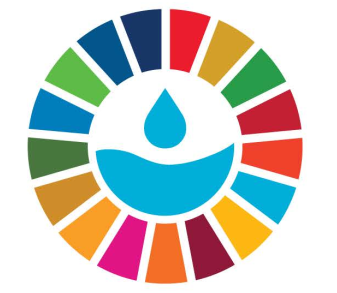
Timeline
Entity
Region
- Africa
- Europe
- Asia and Pacific
- North America
- Latin America and the Caribbean
- West Asia
- Global
Other beneficiaries
NMHS’s of participating countries are the main beneficiaries. Additional beneficiaries include Water Resources Agencies, Climate Change Authorities, Ministries (Agriculture, Environment, Health, Transportation, among others), Civil Protection and Emergency Authorities, and Transboundary basin organizations. Moreover, the generated data and information will also benefit intergovernmental organizations, aid agencies, and NGOs by assisting in identification of hotspots, and helping in directing preparedness and planning in terms of resources in a timely manner.
More information
Countries














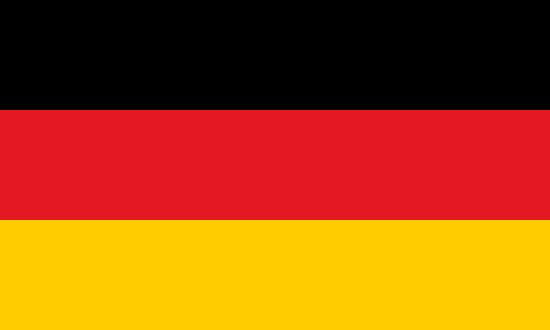


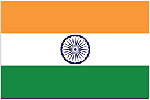





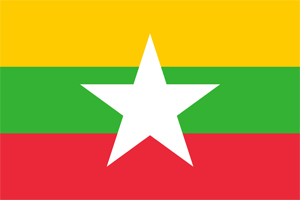





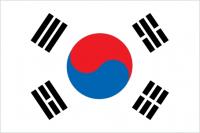








Contact Information
Stefan, Director – Hydrology, Water and Cryosphere, WMO

